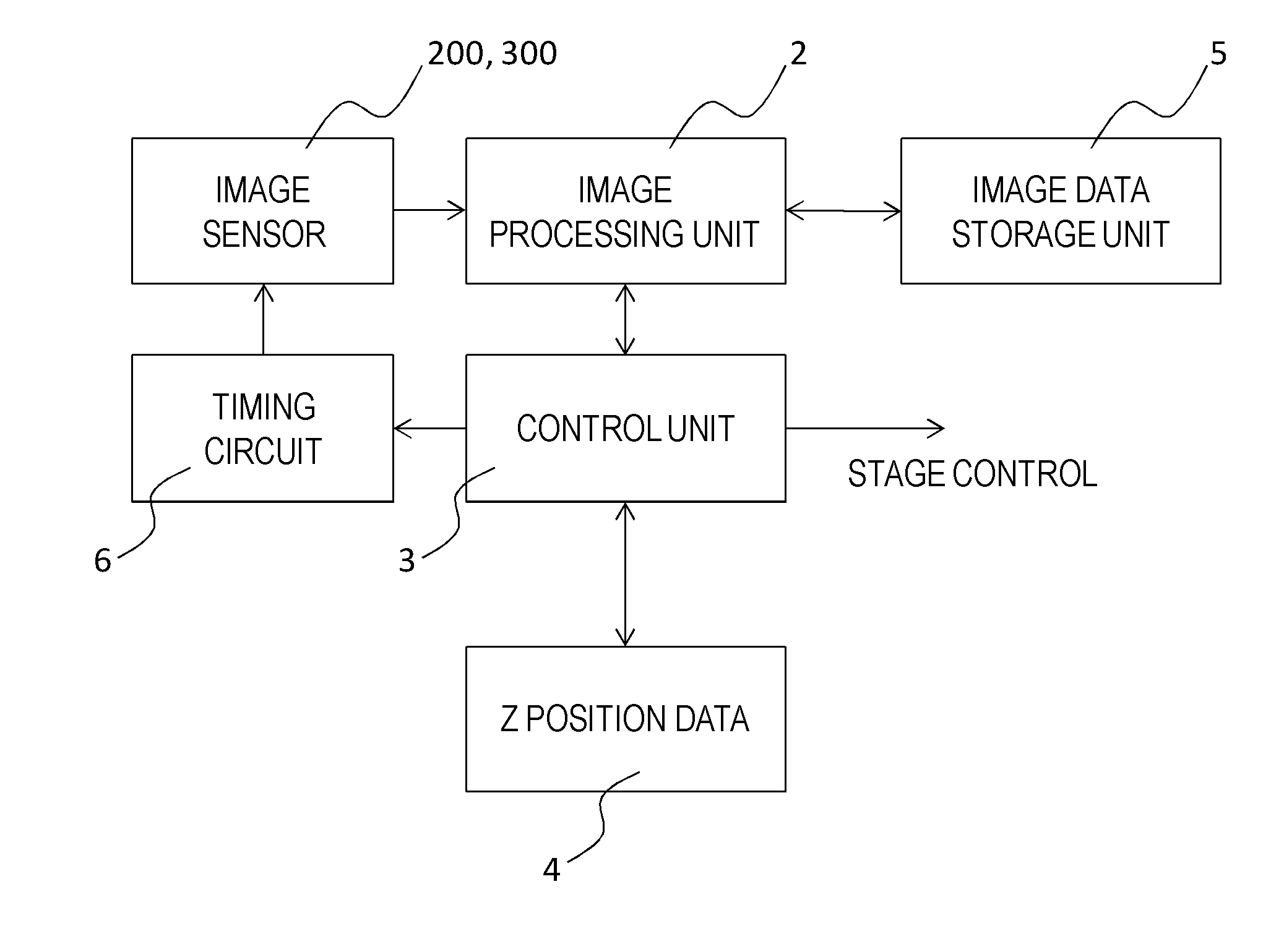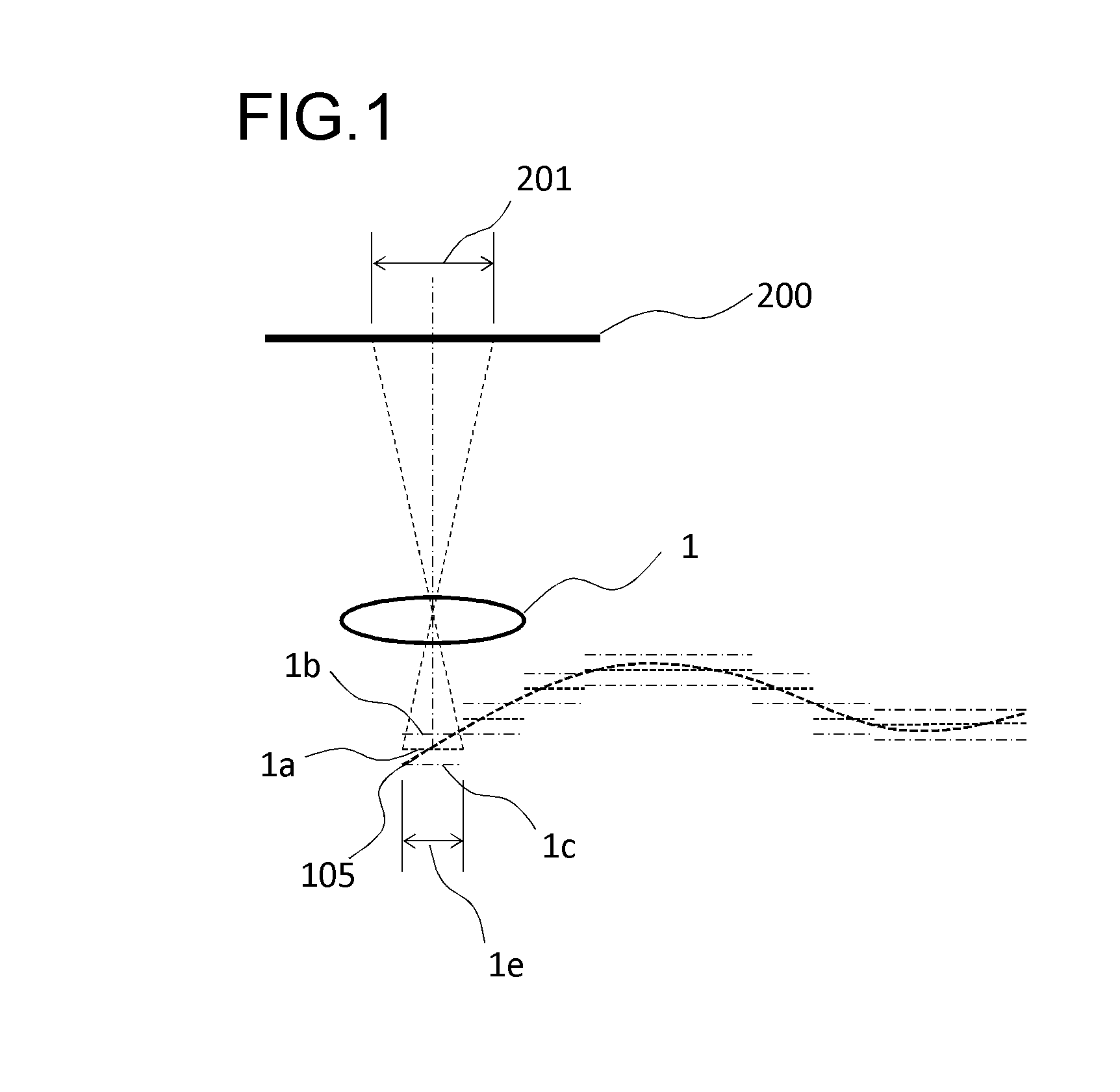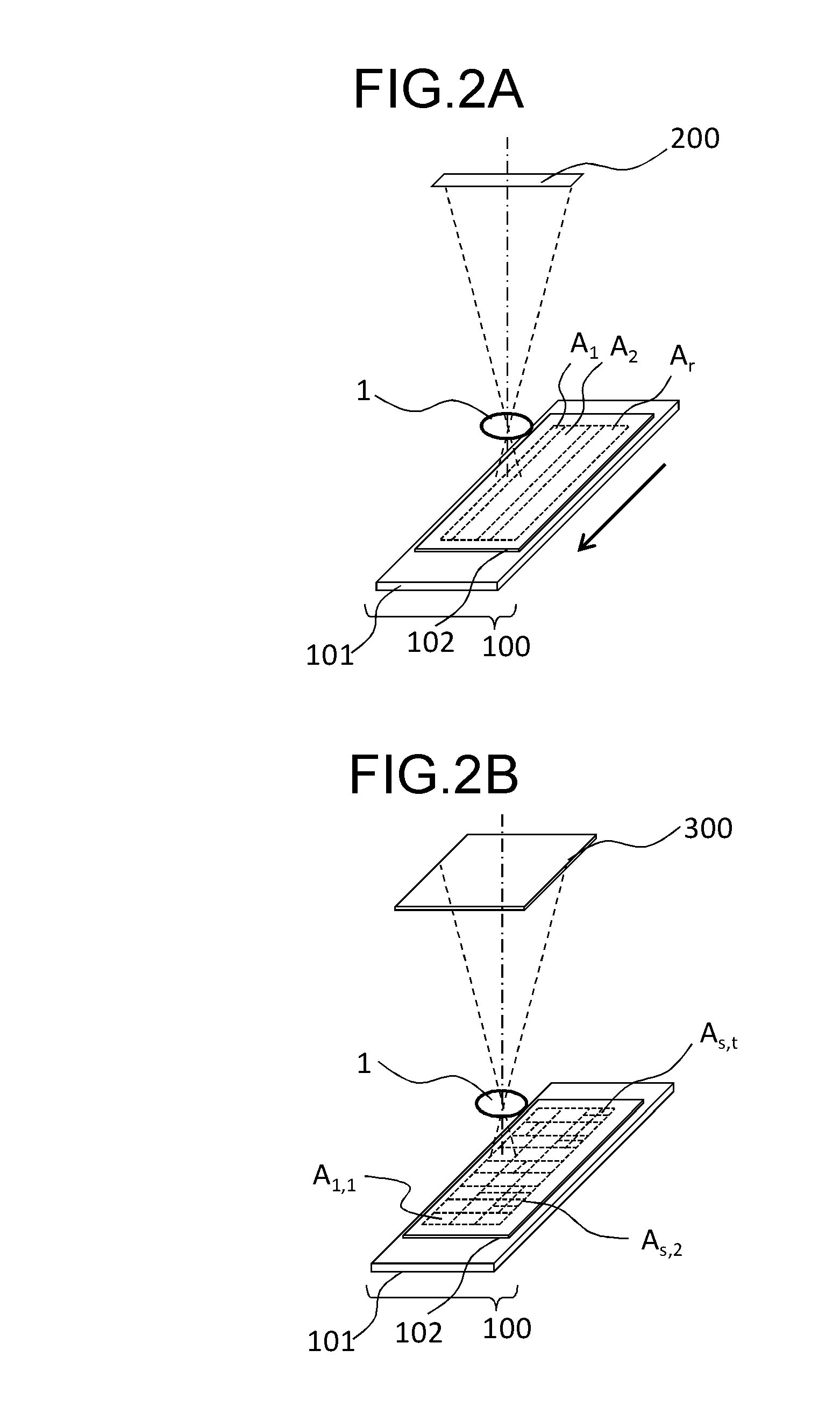Apparatus and control method therefor
a technology of apparatus and control method, applied in the field of imaging apparatus, can solve the problems of image quality decline and increase in significance, and achieve the effects of reducing processing time, increasing throughput, and reducing the time required to image the object and generate the digital imag
- Summary
- Abstract
- Description
- Claims
- Application Information
AI Technical Summary
Benefits of technology
Problems solved by technology
Method used
Image
Examples
first embodiment
[0082]In the first embodiment of the present invention an example is explained in which the present invention is applied to an imaging apparatus using a line sensor as an image sensor. In the configuration of the entire system, one line sensor is disposed with respect to one imaging optical system 1, as shown in FIG. 2A.
[0083](Configuration of Imaging Apparatus)
[0084]FIG. 3 is a block diagram illustrating the imaging apparatus of the first embodiment of the present invention. The imaging apparatus has a line sensor 200, which is an image sensor, an image processing unit 2, a controller unit 3, a memory 4 that stores data on the Z positions of the substances, an image data storage unit 5 that stores the created image data, and a timing circuit 6 that generates the operation timing of the line sensor 200. The imaging apparatus also has a stage that supports the slide, an illumination system that illuminates the slide, an imaging optical system that enlarges the optical image of the su...
second embodiment
[0117]The second embodiment of the present invention is described below. In the above-described first embodiment, the regional Z-positions spread is calculated from the results obtained by performing actual measurements on the slide, whereas in the second embodiment, the regional Z-positions spread is determined from the statistical data acquired from a database.
[0118]The configuration of the second embodiment is identical to that of the first embodiment, as shown in FIG. 3. The main difference between the second embodiment and the first embodiment is in the processing procedure. FIG. 8 illustrates a specific operation of the controller unit 3 and the image processing unit 2 of the second embodiment of the present invention. The operation steps shown in FIG. 8 are explained successively below.
[0119]First, in step ST201, information on the spread of the Z positions of the substances is read from the database. The database may be provided in the memory 4 of the imaging apparatus, or m...
third embodiment
[0128]The third embodiment of the present invention is explained below. In the third embodiment of the present invention, the imaging regions are determined by an algorithm that is simpler than those used to determine the imaging regions from the regional Z-positions spread in the first and second embodiments.
[0129]The configuration of the imaging apparatus of the third embodiment which is shown in FIG. 3 is identical to that of the first and second embodiments. The main difference between the third embodiment and the first and second embodiments is in the processing procedure.
[0130]The processing flowchart of the third embodiment of the present invention is shown in FIG. 10.
[0131]Each operation step of the processing flow shown in FIG. 10 is explained below. First, in step ST301, the Z positions of the substances in the target slide are measured in the same manner as in step ST101 of the first embodiment. In this step ST301, the Z positions of the substances in the X, Y coordinates...
PUM
 Login to View More
Login to View More Abstract
Description
Claims
Application Information
 Login to View More
Login to View More - R&D
- Intellectual Property
- Life Sciences
- Materials
- Tech Scout
- Unparalleled Data Quality
- Higher Quality Content
- 60% Fewer Hallucinations
Browse by: Latest US Patents, China's latest patents, Technical Efficacy Thesaurus, Application Domain, Technology Topic, Popular Technical Reports.
© 2025 PatSnap. All rights reserved.Legal|Privacy policy|Modern Slavery Act Transparency Statement|Sitemap|About US| Contact US: help@patsnap.com



